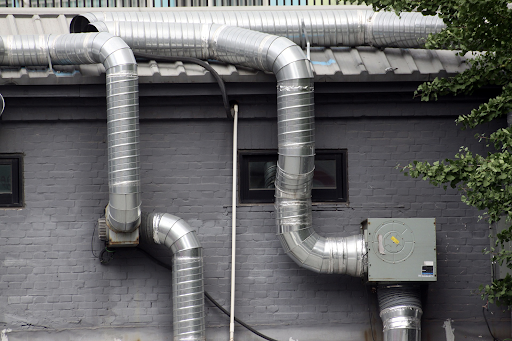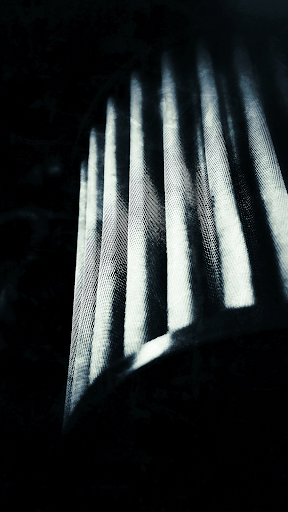The Process of Cleaning Air Ducts
Understanding the process of cleaning ducts can save homeowners thousands of dollars in energy costs while contributing to a cleaner environment. Ducts are the interconnected pipes and channels which route air from the exterior of a building to various points inside. They typically branch out at several locations where ventilation fans, boiler vents, or HVAC vents are located. Air enters these ventilation systems for heating and cooling purposes. However, all ductwork can get dirty with dust. This article will explain how to clean ducts and prevent future problems properly.

What is Duct Cleaning?
The primary purpose of duct cleaning is to remove debris build-up from the interior and exterior surfaces. Getting rid of these particles is vital to both indoor and outdoor ventilation. Ducts perform many other functions within a building, but air duct cleaning is primarily about keeping the indoor spaces clean so that homeowners can breathe clean air.
Reasons for Cleaning Ducts
Critters
Removing living organisms or animal waste is necessary to ensure the complete cleanliness of ducts. If left to accumulate for too long, these substances can cause sickness and health problems in the home. Duct cleaning companies are experts at removing critters from air duct systems and ensuring that air stays clean and healthy.
New home or renovation
Cleaning the ducts is essential not only to those who live in older homes but also to homeowners who may have just moved into a new building. When constructing more unique buildings or remodeling homes, hiring professionals to clean the ducts is essential. This ensures that all debris from renovations is removed from the air duct system and does not circulate inside the home.
Dust
Allergens and contaminants can result in foul odors, sneezing, and difficulty breathing. Even a tiny amount of dust or debris can cause serious health problems, so homeowners should ensure their ducts are clean. Dust and dirt can build up inside ducts and cause severe problems for those living there.
Overview of How Ducts Are Cleaned
Cleaning ducts is an annual project that requires the removal of dust from the system with a vacuum. However, completing the job takes time and patience, like any other task. Essential steps should be followed when cleaning ducts to ensure quality work.
Step 1: Pre-inspection
A professional should inspect all ducts before cleaning. This is to ensure that any parts of the system are accessible and that there are no obstructions such as blockages or damage to the system. Some plans may require ultrasound inspection or thermography (infrared imaging) to find out if there is any damage in the system.
Step 2: Negative pressure and debris removal
The primary cleaning process involves identifying and removing which air ducts contain debris. Inspecting the ductwork may require a flashlight, but this step is crucial to ensure a clean environment. Damage to HVAC equipment could come from various causes, but if the central ductwork is blocked, intense pressure will build inside it. This can cause severe complications and possible damage to heating and cooling systems.

What is the Equipment Used?
The tools and equipment used during cleaning depend on the ductwork system’s size and the dirty vents’ location. Kit may include a metal brush, cobra flashlight, extension tube, and dust bags. Professional cleaning companies use vacuums to remove any dirt and debris. The vacuums suck out the debris and dust from the ducts by creating pressure.
Ductwork Brushes
Scrubbing industrial brushes are used to clean ventilation pipes. The cleaning process involves a rotating brush that removes dust, dirt, and grime from the pipe. A vacuum attached to the brush cleans the contaminated area of any residue.
Extension Tubes/Parts
Ductwork parts quickly clean out all vent systems and empty the vacuum bags. This allows for easier accessibility and removal of debris from hard-to-reach pipes. Flexible, portable hoses and extensions make it possible to clean vent pipes; Nozzle extensions are also available for individual vacuum units from most manufacturers.
Compressed Air Equipment
The compressed air system what-is-compressed-air designed for cleaning ducts is the most common and efficient method to remove debris and dust. This method involves a compressor, a hose, and a nozzle. The vacuum bag is attached to the compressor, while the dust is placed in the hose. An airflow nozzle at the end of a hose creates pressure, which sucks out debris particles from all pipes.
Truck Powered Vacuum
A truck powered vacuum is the most efficient choice of equipment to clean ducts. They offer effective removal and cleaning of all vents attached to ventilation systems. These vacuums are extremely effective no matter the size of the ventilation pipes being cleaned.
The Full Air Ducts Cleaning Process
Ensuring clean ducts is crucial because they are the primary pathway for air passing through a home or office. Air duct cleaning eliminates all the dust and dirt from the system, capturing dangerous particles. Air duct cleaning does not simply involve vacuuming debris like dust and dirt.
Below are the steps to properly clean air ducts:
Inspection
The first step of the cleaning process is to examine the condition of the ductwork. Properly inspect ducts for damage and other flaws. Structural concerns such as leaks, cracks, or bad connections may require the entire system to be replaced. If only the portion of ductwork currently needing cleaning is examined, an estimate can be made on how much will be required. Tools and equipment that may be used for further inspection include a flashlight, mirrors, and duct tape. The main goal is to determine where the dirty parts of the ductwork are and what problems they may contain.
Creating negative pressure
Polluted air within a ductwork system can make cleaning difficult. Negative pressure must be created to ensure the polluted air stays in the ducts that are being cleaned and not in the surrounding areas. This is done by deploying a vacuum through the vents that create a suction effect to remove dirt, dust, and other debris particles. The goal is to clean as much of the contaminated air in this manner as possible. A reverse pressure vacuum is created by drawing it with a vacuum cleaner and then releasing it through a hose connected to the fan. Duct cleaning professionals use specialized equipment to clean ducts and vent systems effectively.
Agitating the dust
Agitate all open areas within the ductwork system to stir up any material that may be settled on surfaces. Agitation also serves to draw air into the method where breathing is safer. Creating pressure at this point in the cleaning process should be done before and after the agitation of the dust. By agitating the debris and creating reverse pressure, the contaminated air is better able to be removed. It involves turning on an air blower and moving furniture away from the area which is being cleaned. After that, the vacuum hose is connected to a fan. At this point, particles of dust and debris can be blown into the ductwork system because of the movement created by the air blowers. Particles will become entangled in the airstream, making it difficult for cleaning professionals to safely work in an area without risking a health problem.
Source Removal
After dust and debris have been agitated and drawn into the ductwork system, a truck-powered vacuum can remove the material inside the ducts. This step of the cleaning process involves vacuuming all accessible areas within ducts with a power vacuum. A truck-powered vacuum is best for this particular step because it is powerful enough to pick up particles of dust and debris previously undetectable by human eyes. Vacuums are used to suck in dirt and grime that was once not reachable. Getting rid of all the dust and debris is vital to creating a more comfortable environment within a home or office. The vacuum serves this purpose by removing particles that could cause respiratory problems or other health issues.
Cleaning the whole system
Air ductwork can vary in size and shape depending on its location within a building. Some ducts only go from outside to inside, while others run from one side of the device to the other. Other ducts may be located at different heights than others. Most of the time, an air system will have several different combinations of ductwork throughout a building. Cleaning professionals should be able to get into every part of an air system without doing more than just one cleaning job.
The whole system should be thoroughly cleaned with air duct cleaning services to ensure the health and well-being of the people in the home or office. Damage caused by the build-up of debris in ducts can lead to excessive energy loss, which will be higher than just the costs of cleaning ducts. Leaks and cracks caused by the build-up of debris in ducts will result in dirty air entering a system, which will cause allergens and bacteria to be circulated throughout an area. Not cleaning ducts can also lead to overheating and excessive wear and tear on HVAC equipment. This will lead to increased maintenance costs to continue properly functioning a system.
Air filter change
Air filters are used to help filter out impurities and debris from the air that is in a ductwork system. It is essential to replace air filters annually to ensure the air quality of a home or office stays clean and fresh. The HVAC technician should also be the one to perform this task due to the need to be well-versed in how air filters work and how they can be cleaned. Changing air filters involve disconnecting ducts and removing the old filter. An HVAC technician will inspect and clean the filter, checking for holes, tears, or defects. The new air filter is then placed back in its location. Dust removal from an air filter can be done by cleaning the outside of a filter with compressed air or wiping it down with a damp cloth. Air filters must be cleaned at least every month to maintain the proper functioning of an HVAC system.

Full system test
After ducts have been cleaned and any filters replaced, a test run should be done to ensure the system works properly. A complete system test should be performed after cleaning, especially if some residents or employees have asthma or other respiratory conditions. The system is tested with a blower door test to check for leaks and verify that the airflow is correct and functioning properly. A blower door test creates a pressure imbalance that makes leaks easier to spot. A system’s general cleaning should be tested using multiple airflow registers. These registers will be set to different airflow levels and then checked at the other end of each duct to verify that the airflow is consistent throughout the system.
Conclusion
Air duct cleaning removes dirt and debris from all the nooks and crannies in ducts. This can be achieved through various methods, specifically regarding the cleaning itself. Cleaning professionals must know how to use multiple tools and equipment to properly clean all areas within an air system prone to contamination. Removing dirt and dust can keep a system running at its peak efficiency. Allowing these particles to build up inside a system has been known to cause leaks, cracks, and other damage that could lead to increased repairs. Seeking out the services of professional cleaners can ensure that the air quality in a building is healthy and maintained
